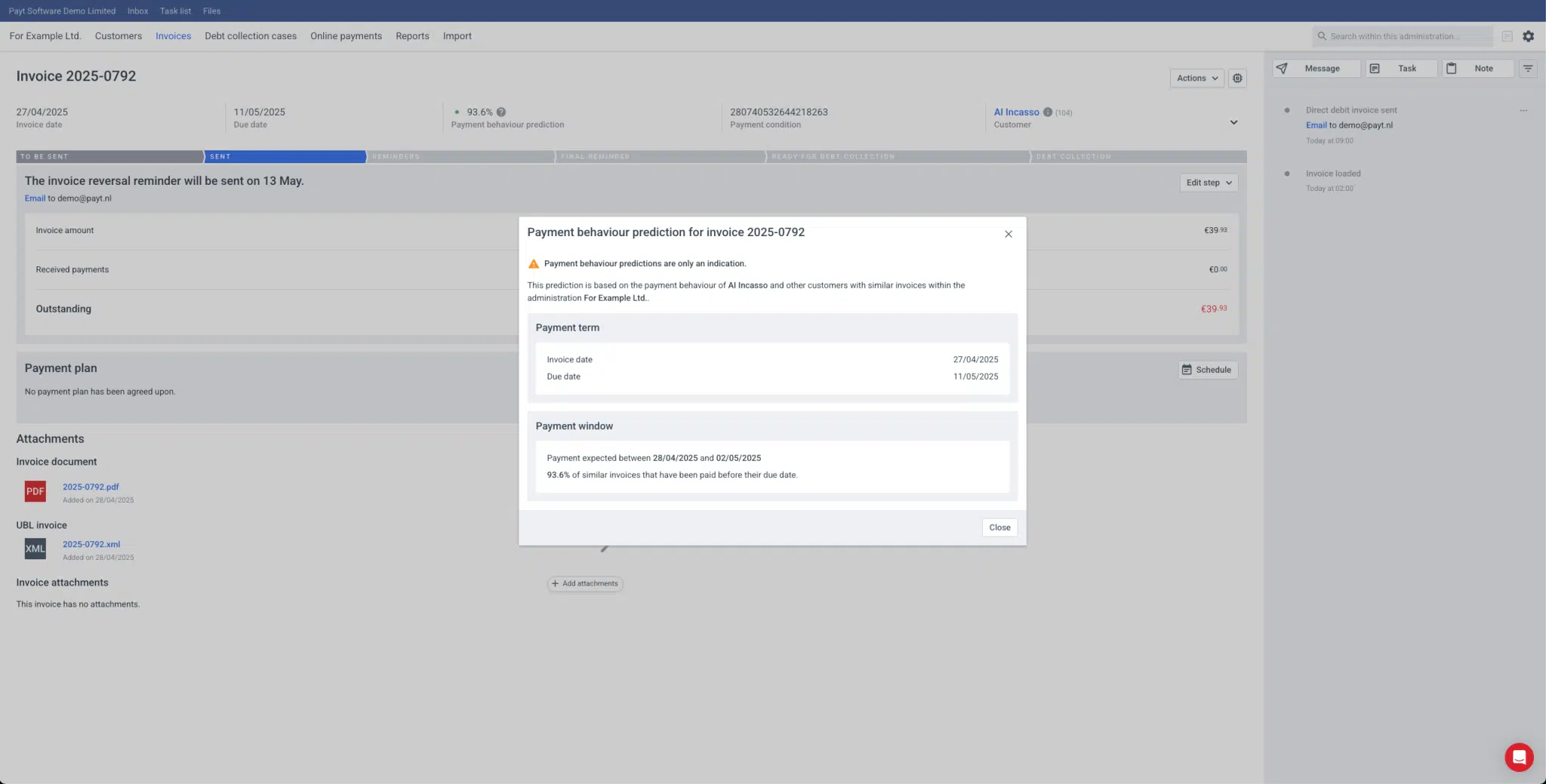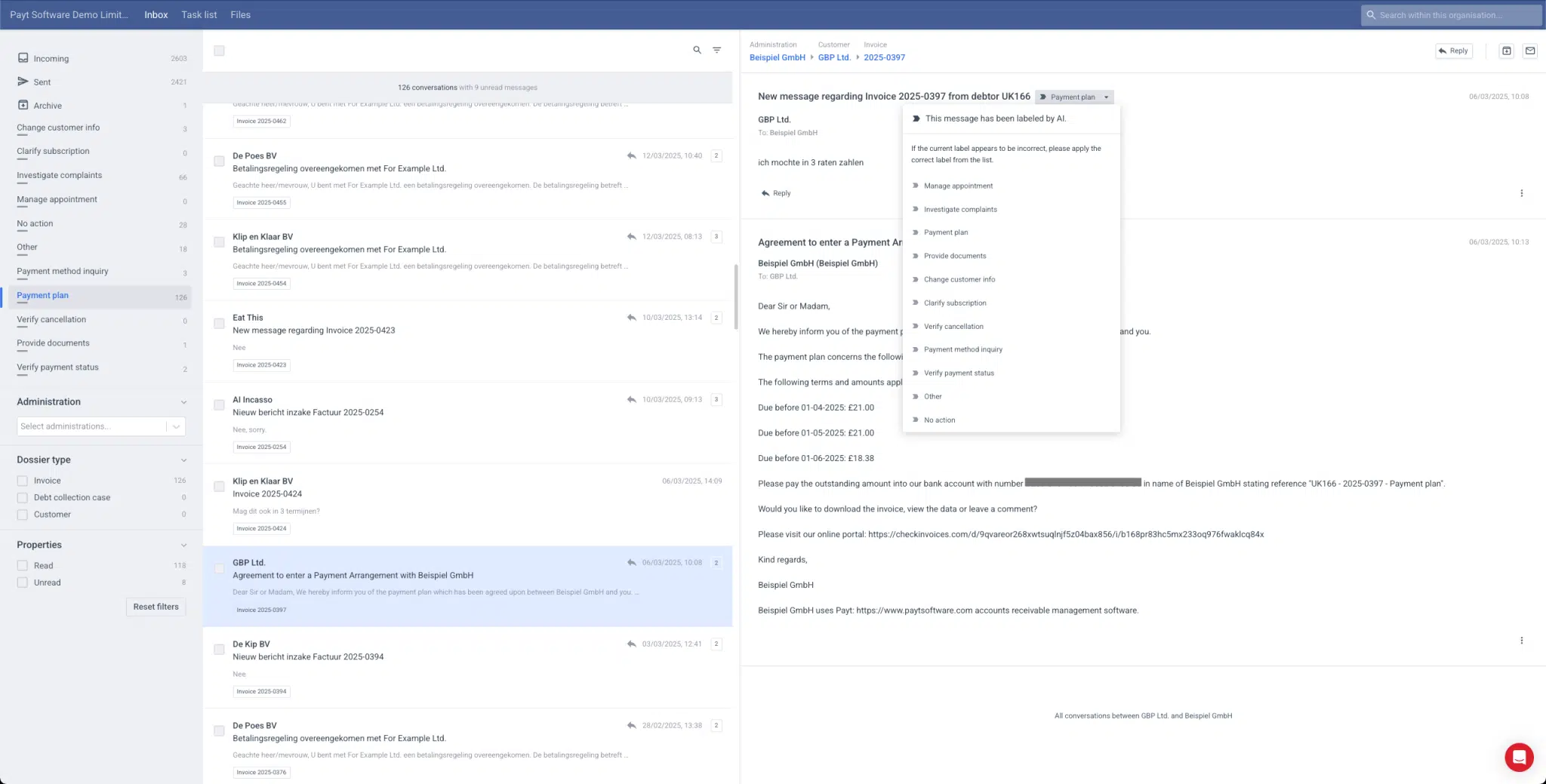Support of Payt customers
In my personal view, within five years, all successful companies will be using AI in customer support. The advantages are simply too great to ignore. Of course, some hesitation remains—people often find it difficult to fully trust a computer. Every mistake tends to reinforce that scepticism. Think about self-driving cars: they already perform better than human drivers on average, yet every incident immediately sparks a “See?!” reaction.
Fortunately, the consequences of an occasional error in support are far less dramatic.
Starting in 2026, Payt customers will also be supported by Payter, our own AI support assistant. Payter draws his knowledge from our existing support articles. If he doesn’t have an answer to a question, he automatically creates a task for our human support team to expand the knowledge base. Our support colleagues actively monitor Payter’s responses and provide feedback whenever needed. And of course, customers can always choose to switch directly to a human agent.
In the beginning, there will still be many questions that we consciously continue to handle manually—for example, actions like deleting groups of invoices. But over time, more tasks will be handed over to Payter.
Thanks to Payter, we’ll soon be able to offer support even outside regular working hours. And an added benefit: by using AI smartly, we can keep our team small, highly skilled, and ready to grow—even as the labour market tightens.









